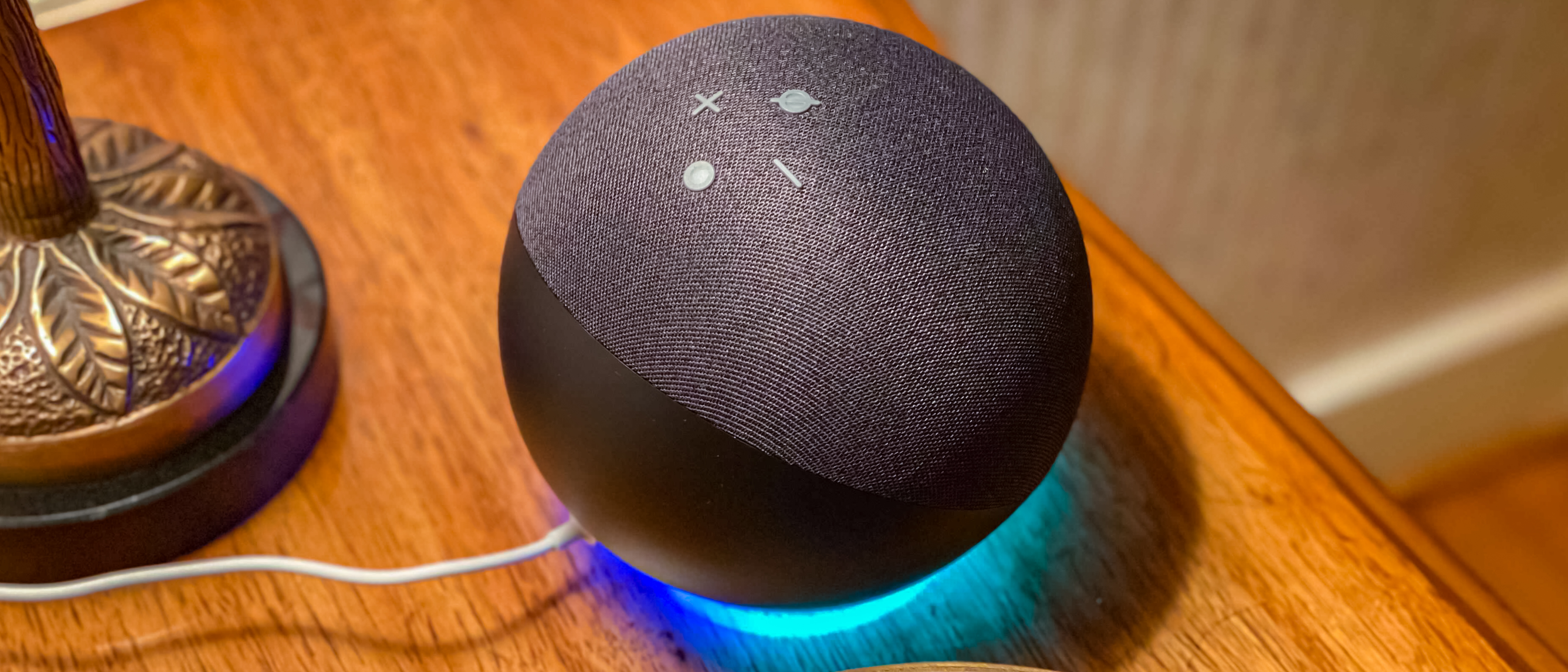TechRadar Verdict
The new Amazon Echo (2020) is a serious step up from its predecessors, even if it still doesn't have the best sound of any smart speaker. Add to that the built-in Zigbee smart home hub and a new AZ1 neural edge processor that will reduce the time it takes for Alexa to respond to commands, and you’ve got the recipe for the best Echo design yet.
Pros
- +
Futuristic look
- +
Improved, adaptive sound
- +
Alexa responds faster
- +
Zigbee hub integration
Cons
- -
Max volume level isn’t loud enough
- -
Not as clear as the Echo Studio
- -
No Chromecast or Home Kit support
- -
Privacy is still a big concern
Why you can trust TechRadar
Having stuck with essentially the same design for its iconic smart speaker since it first appeared 2014, aside from making it more compact and introducing more refined finishes, Amazon has taken the Echo (2020) in an entirely new direction – well, 360 directions, technically speaking.
The new spherical Amazon Echo is a complete revamp of the company’s flagship smart speaker, and the aesthetic overhaul, while impressive, is just the half of it: with improved audio, a built-in Zigbee smart home hub, and a new AZ1 neural edge processor that will reduce the time it takes for Alexa to respond to commands, it’s a complete makeover.
Of course, while the hardware is all-new, it’s still the same ol’ Alexa under the hood. Alexa will still be able to answer your basic questions or make calls within your country of residence, as well as control any number of smart devices you have around your home.
So are there any negatives? Not many, really. The Echo’s only real issues are that its max volume level is a bit soft, especially compared to larger smart speakers like the Apple HomePod (now discontinued) and Google Home Max, and that Amazon remains a rather insular company, limiting the technology that’s compatible with its speakers. That means you won’t be able to Cast audio to the Echo the way you can with the Google Nest Audio, and you’ll have to use Bluetooth any time you want to connect to your phone.
There’s also privacy to consider: Amazon keeps a recording of every Alexa request you’ve ever made, and there’s always a lingering fear that Amazon could be using that data in ways that you wouldn't be comfortable with, although Amazon insists that your recordings are, and will remain, private.
Having Alexa know when you open your garage or turn off your lights is still a huge source of concern for a lot of us, though, and Amazon hasn’t done much to allay those concerns. It’s not enough to stop millions of us from using Amazon’s devices, but it’s something we remain leery of all the same.
But if you shrug off the privacy concerns – or at least give Amazon the benefit of the doubt – and invest in Alexa’s broad smart home ecosystem, the Amazon Echo is easily one of the most affordable and responsive smart speakers we’ve yet to see, and offers supremely good value.
- The best Alexa speakers you can buy today
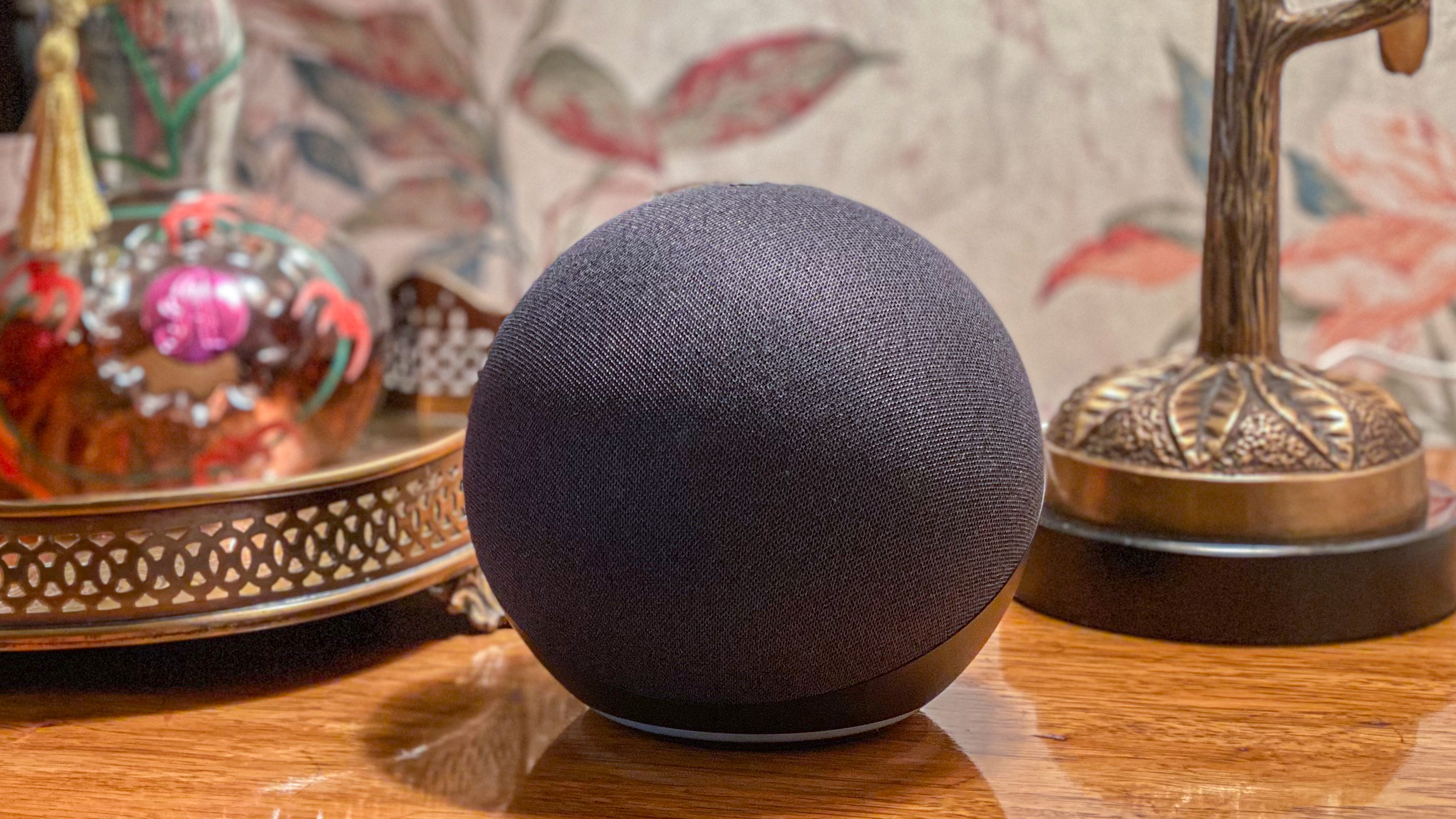
Price analysis and release date
The Amazon Echo (2020) has been available to buy since October 22, 2020 for $99.99 / £89.99 / AU$149 – the same price as the previous Echo was when it launched in 2019.
In terms of the competition, the Amazon Echo is the same price as the Apple HomePod Mini and the Google Nest Audio, which were both launched around the same time. Well, whichever smart home ecosystem you’re tied into, there’s a wireless speaker in that price range for you.
Design
It’s an obvious place to start, and we feel obligated to begin with the design of the latest Echo – it’s a massive difference that contrasts with what we’re used to seeing from Amazon, and it looks downright 'space age'. While Amazon sent us the Charcoal color sample to review, the Echo is also available in two other colors – Glacier White and Twilight Blue.
The spherical chassis of the Echo is divided into two parts: there’s a layer of hard mesh and a plastic back piece with rubber feet on the bottom so that it doesn’t scratch your table. You’ll also notice a plastic translucent ring along the bottom, which serves as the LED indicator light, telling you when Alexa is listening (blue), when the microphone is muted (red) or when the speaker has lost its internet connection (yellow).

On the top of the sphere is where you’ll find four control buttons – volume up, volume down, microphone off/on and a button that summons Alexa. All of these buttons can be replaced by voice commands, with the exception of microphone off, which always requires you to physically go over to the speaker and turn it off.
Spin the Amazon Echo around and you’ll find a power connector and a 3.5mm aux line in/out jack that can be used to either send the audio signal to an external speaker or connect the Echo to a separate source like your phone or tablet. To select which way you want it to work, head to the Alexa App > Devices > Select your Echo device > go to Settings (gear icon) > AUX Audio (where you can select Line-in or Line-out).
Under the hood of the new Echo, you’ll find a 3-inch bass driver that points slightly upward, and dual 0.8-inch tweeters that are angled to deliver a fairly wide cone of sound. That’s slightly different from the 360-degree audio array that we got on the last-generation Amazon Echo and very different from the six-tweeter-equipped HomePod. That will drastically change how the new Amazon Echo sounds compared to the previous model, but we’ll cover that in more detail later on in the review.
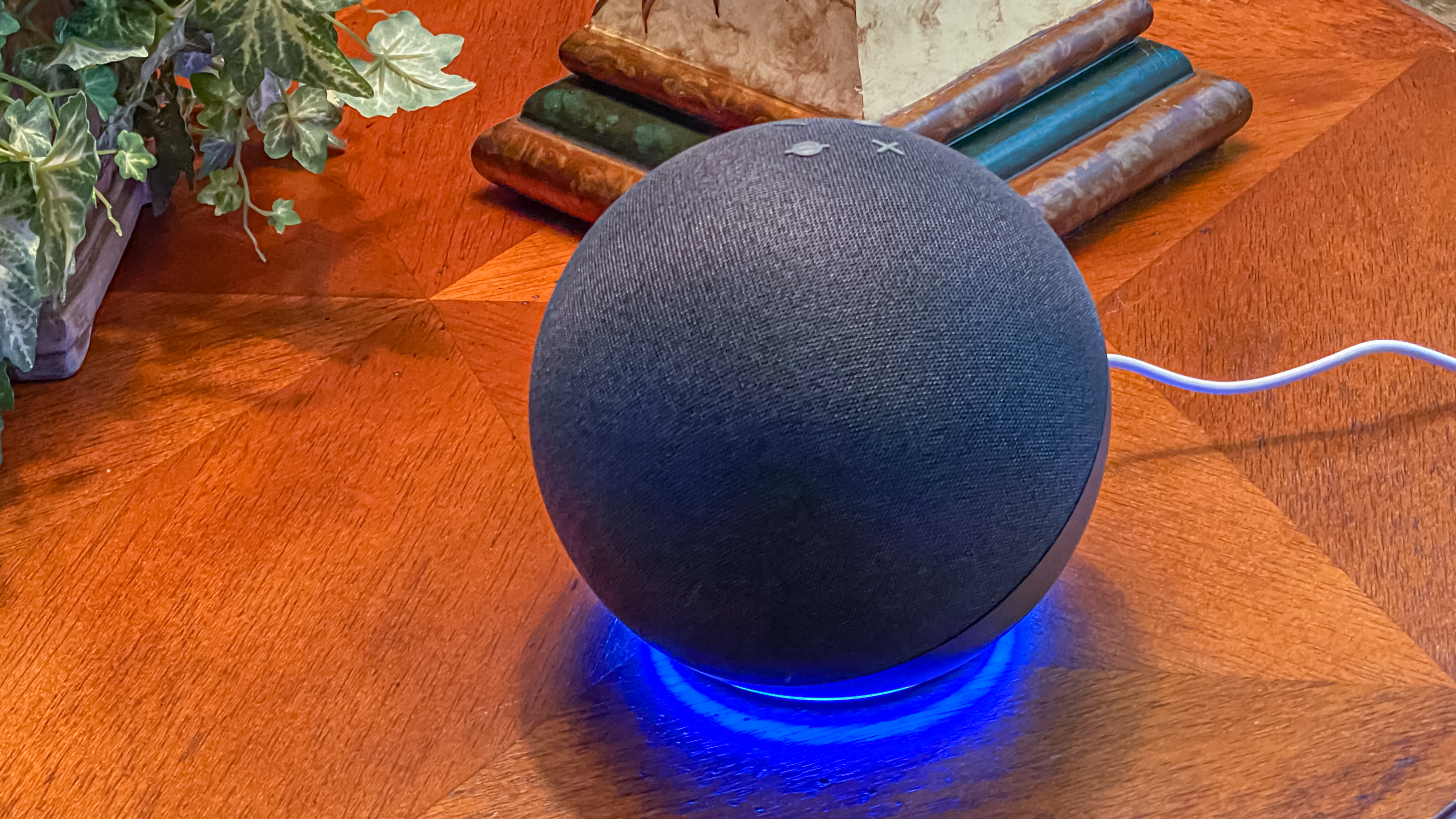
Smart assistant (Alexa)
While in the past it might take Alexa a second or two to process our requests, the latest Echo responds in half the time thanks to the new AZ1 neural processor that will work in tandem with a revised speech model to process commands.
Not only is Alexa a bit faster to respond this time around, it’s more capable of connecting to other smart devices, too, thanks to the included Zigbee hub. Connecting a smart home device is typically as simple as plugging the product in and asking Alexa to search for devices. Once it’s found, you can change the name of it inside the Alexa app and you’re done.
Once you have a whole smart home’s worth of devices at your disposal, it’s time to invest in some routines to make your life easier. Routines can be created inside the app and can consist of, say, turning on the light any time you open your closet by using a door sensor and a smart light bulb, or have your thermostat turn on when you get home by telling Alexa that you’re back. Creating routines is fairly simple, and they’re a fun way to feel like you’re living in Tony Stark’s mansion… even if you don’t have a basement full of Iron Man suits.
To bolster what Alexa can do, you’ll need to add separate Skills, which can be found in the Alexa app. While most of the added Skills really aren’t that helpful, there are a few neat ones worth looking into like Headspace that will help you de-stress or Song Quiz that turns your speaker into a music quiz host. They’re fun, ephemeral experiences if nothing else.
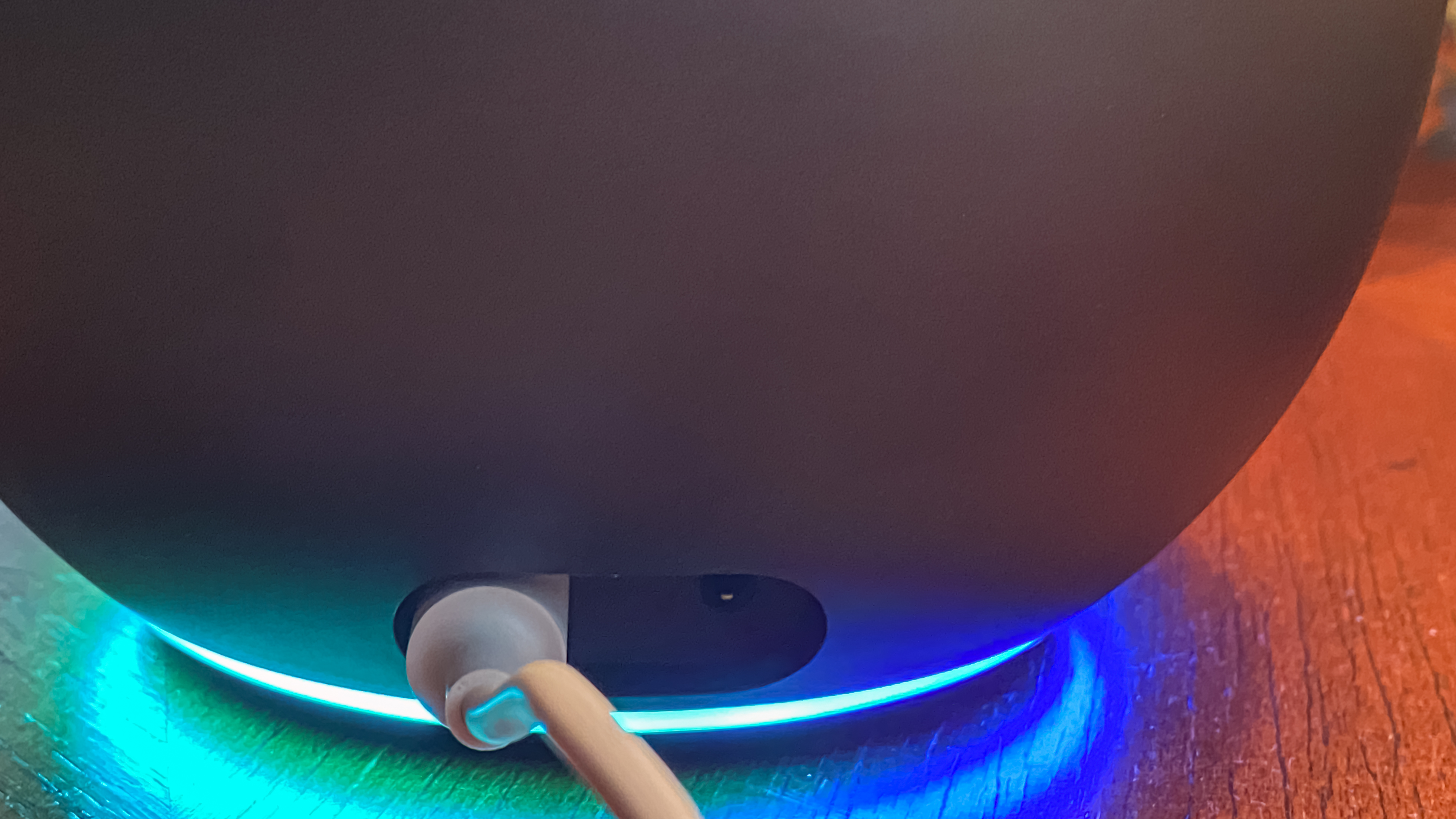
In terms of actual entertainment Alexa supports most major music streaming services including Amazon Music (Standard and HD), Apple Music, Spotify, TIDAL, Deezer, Pandora, SiriusXM, iHeartRadio, and TuneIn, though you’ll mostly want to stick with the default Amazon Music, as you’ll then have around 30,000 songs at your fingertips, plus a smorgasbord of podcasts. If you have a Fire TV, Alexa can control that, too, but if that’s a feature you’re looking for specifically, you should pick up an Amazon Fire TV Cube instead.
Although it’s not exactly a Sonos system, you can use Alexa to create a multi-room music setup by grouping your Alexa speakers together. This is especially useful if you want to have the same song playing across every room in your home.
Last but not least, it’s worth mentioning that Alexa can watch over your home while you’re away with a feature called Alexa Guard. Once it’s set up, you can tell Alexa you’re leaving and it will enter Guard Mode and will alert you if it hears the sound of smoke alarms, carbon monoxide alarms, or glass breaking. We’ve never needed to use it thanks to the smart cameras we have set up around the house, but it’s nice for folks who don’t quite have that level of home security setup yet.
Performance
So how does the new Amazon Echo sound? Well, its spherical design might lead you to believe that it will offer 360-degree sound, but in actuality you’re getting pretty focused, directional audio that’s at its best when you’re standing a few feet in front of it.
In terms of tonal quality, you’re getting a fair amount of bass and midrange, but not a ton of sub-bass so that it rattles the walls or too much treble that the sound quality is fatiguing. The result isn’t the richest sound quality we’ve heard on a speaker, but it is significantly better than the first-generation Echo speaker we’ve had sitting on our shelf for a few years now.
The problem with the sound quality is two-fold, though. The first issue is that, at a medium volume level, the music isn’t as detailed as it could be due to its limited soundstage. Lyrics are audible, for example, but they don’t sit outside the mix in a way that makes them crystal clear - it just sounds like a flat wall of sound. The second problem is that, if you turn it up, the mix doesn’t improve much and the peak volume level is still lower than some party-focused Bluetooth speakers like the Ultimate Ears Hyperboom.
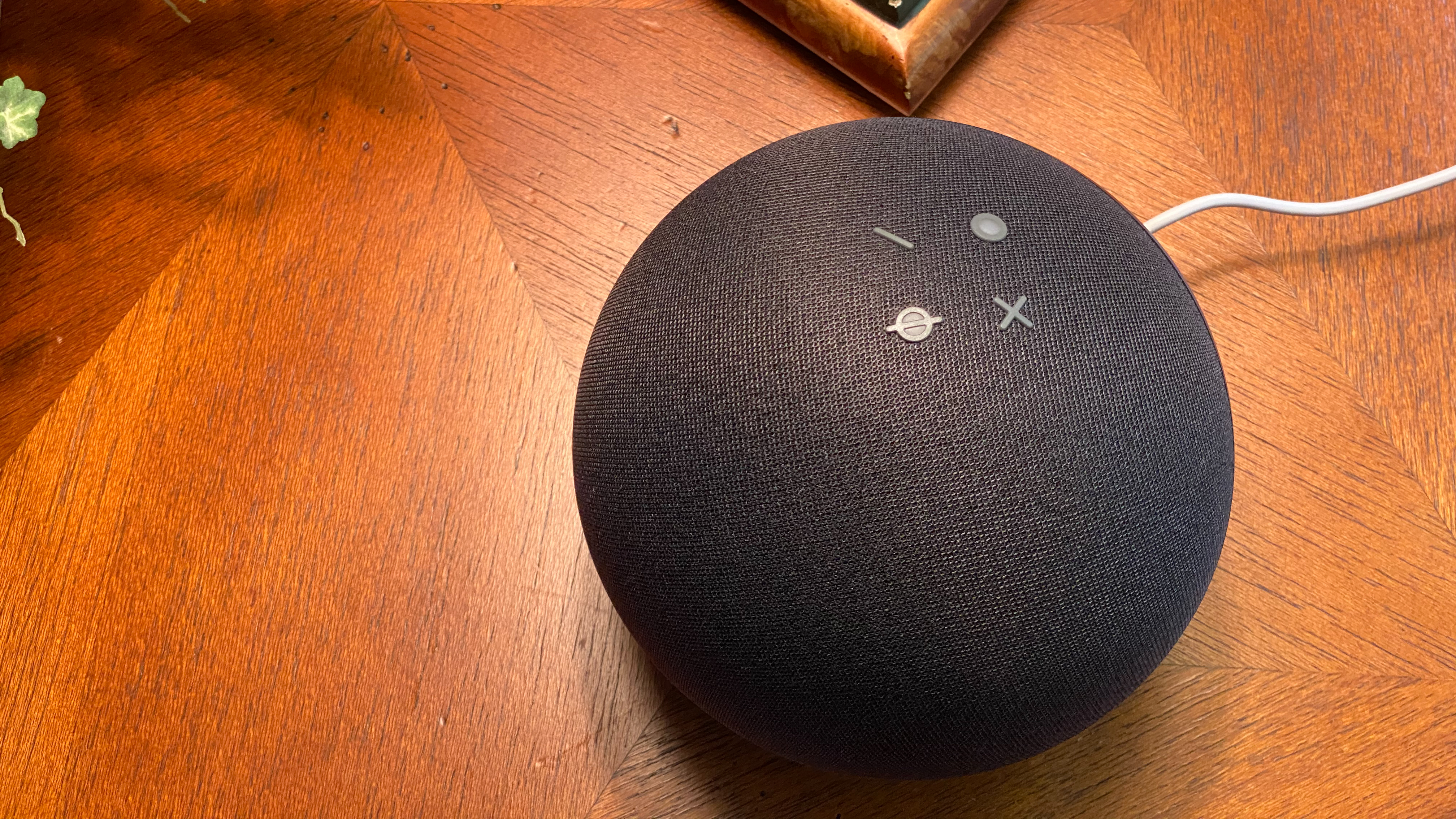
Listening to Red Hot Chili Peppers’ Californication you’ll hear the slamming snares, John Frusciante’s melodic guitar and Flea’s driving bass – all of which sound great individually - but begins to fall apart slightly when singer Anthony Kiedis joins the mix 20 seconds in. Richer compilations of sound like this usually go the same way – beautiful in the beginning when there aren’t many layers, and then worse when the music gets complicated.
The upshot here is that you can actually tweak the EQ using Alexa voice controls. You can use Alexa to raise the bass, midrange or treble, which we tried in search of the perfect sound. While adjusting the EQ can help some, you should temper your expectations, there’s only so much tweaking the EQ can do.
All that being said, the sound you get from the speaker will be impressive to folks who haven’t heard the likes of the Apple HomePod or Sonos One, both of which produce fuller audio, and to anyone who still owns the canister-shaped Amazon Echo as the improvements Amazon has made truly are steps in the right direction.
Should you buy the Amazon Echo (2020)?
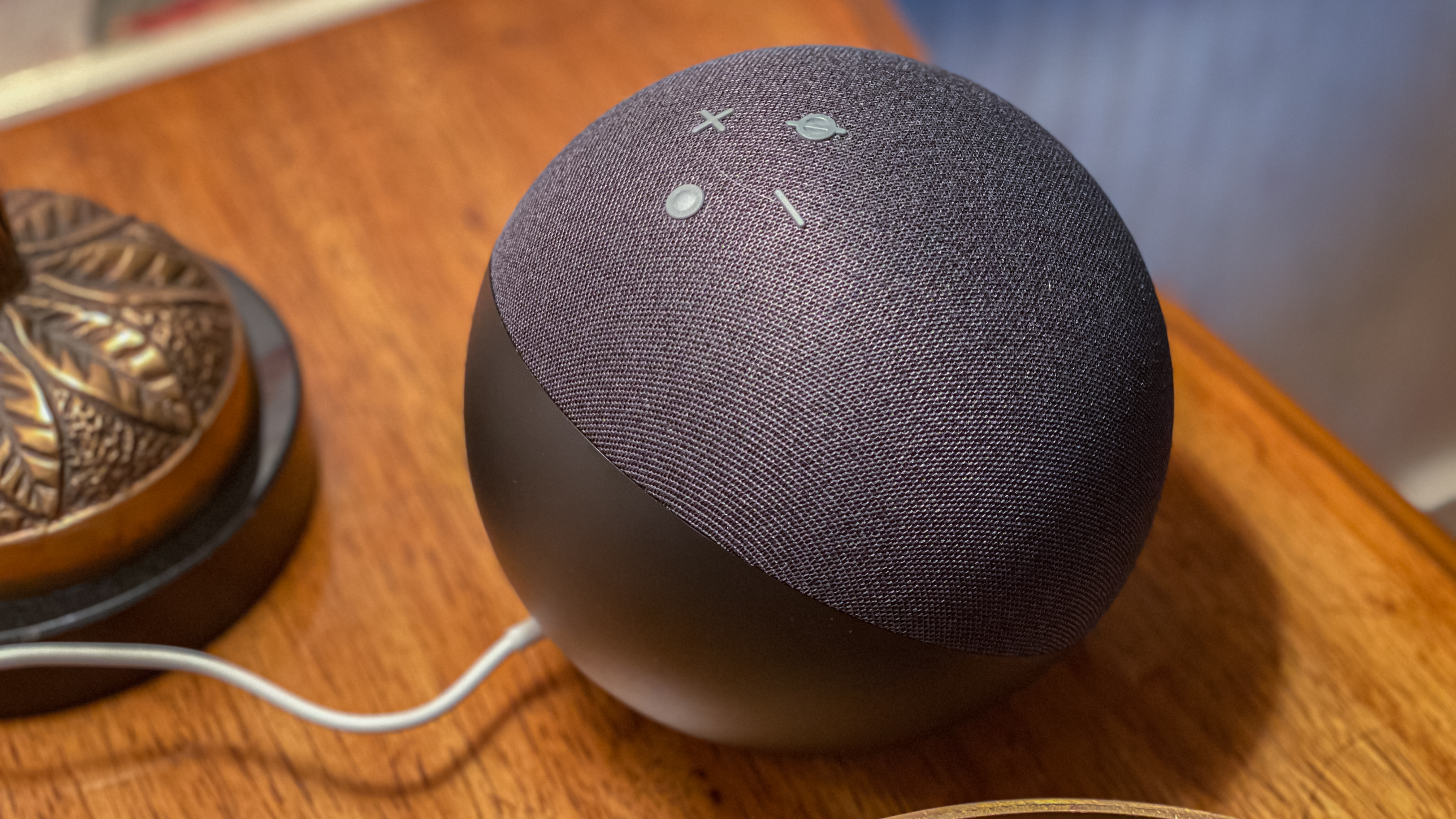
Buy it if…
You’re looking for a cheap smart speaker that does it all
For the price, the Amazon Echo is pretty impressive. No it doesn’t sound as good as some other smart speakers that cost twice as much, but what you get is a speaker that has all the important features like Zigbee integration at a price that doesn’t break the bank.
You’re looking to upgrade your first-generation Amazon Echo
While the difference between audio quality is typically incremental year-on-year, there’s no doubt that the sound is significantly better when comparing the new Amazon Echo and the original speaker that was released a few years ago. If you’re still using the original and you want a big sonic upgrade, you won’t be disappointed with the newest iteration of the device.
It’s on sale
Of course, the best day to pick up any Amazon device is during the company’s annual Amazon Prime Day event, Black Friday or Cyber Monday, which typically see slashed prices across the entire line of Echo devices. If you see one during the sale for half the price, definitely pick one up.
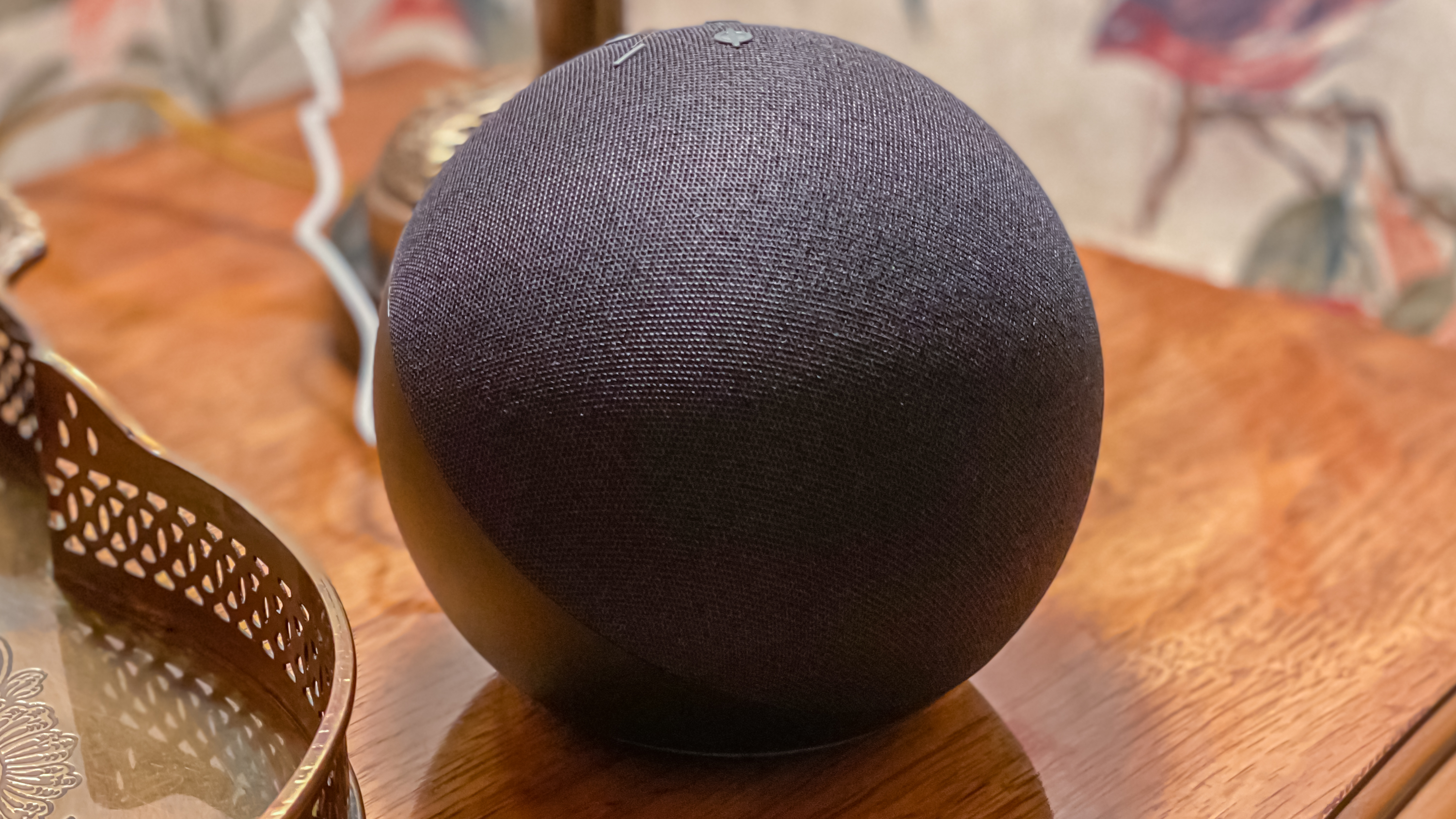
Don’t buy it if...
You want the best-sounding smart speaker
While we really appreciate the audio upgrades Amazon made with the new model, it’s still not able to compete in terms of overall power and clarity with some of the best-in-class smart speakers from Sonos and the like.
You’re concerned about your privacy
Like all smart speakers, we’d advise you to take caution with the Amazon Echo. Although Amazon probably doesn’t do anything nefarious with it, tech companies often take bits and pieces of personal information to improve their products - which means someone, somewhere out there is likely listening to bits and pieces of your conversations.
You don’t have an Amazon Prime account
Probably the biggest differentiating factor between the Amazon Echo and the Google Nest Audio is that the former really requires an Amazon Prime account to unlock its full potential. Sure you can get away without one, but using one unlocks Amazon Prime Music streaming, which is by far the easiest streaming service to use with the device.
- Amazon Echo (2020) vs Amazon Echo (2019): all the key specs compared
Nick Pino is Managing Editor, TV and AV for TechRadar's sister site, Tom's Guide. Previously, he was the Senior Editor of Home Entertainment at TechRadar, covering TVs, headphones, speakers, video games, VR and streaming devices. He's also written for GamesRadar+, Official Xbox Magazine, PC Gamer and other outlets over the last decade, and he has a degree in computer science he's not using if anyone wants it.
